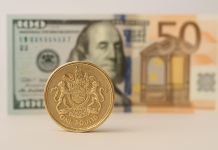Introduction
As global economies navigate the complexities of post-pandemic recovery, the accumulation of dollar assets, gold, and official foreign exchange reserves has become a focal point for financial analysts and policymakers. This article, published on May 29, 2024, by Liberty Street Economics, delves into these critical components, exploring their significance, recent trends, and broader implications for global economic stability.
The Role Of Dollar Assets
Dollar assets, comprising a significant portion of global foreign exchange reserves, play a pivotal role in international finance. These assets, primarily US Treasury securities, are favored for their liquidity and perceived safety. As of the latest data, dollar assets account for approximately 60% of global reserves, underscoring their dominance in the international monetary system.
Recent Trends In Dollar Assets
Recent trends indicate a continued accumulation of dollar assets by central banks worldwide. This trend is driven by several factors:
Economic Uncertainty: In times of global economic uncertainty, dollar assets are perceived as a safe haven, leading to increased demand.
Interest Rate Differentials: The relatively higher interest rates in the United States compared to other advanced economies attract investors seeking better returns.
Trade Surpluses: Countries with trade surpluses, particularly those in Asia, continue to invest their surplus dollars in US assets.
However, this accumulation is not without challenges. Concerns about the long-term sustainability of the US debt and potential shifts in monetary policy pose risks to the value of these assets.
The Significance Of Gold Reserves
Gold has historically been a cornerstone of financial stability and a hedge against inflation. Central banks hold substantial gold reserves as part of their foreign exchange holdings. Gold’s intrinsic value and historical performance make it an attractive asset during periods of economic uncertainty and inflationary pressures.
Accumulation Of Gold Reserves
The accumulation of gold reserves has seen a resurgence in recent years, driven by several key factors:
Inflation Hedge: With rising inflationary pressures globally, central banks are turning to gold as a hedge against currency depreciation.
Diversification: Diversifying reserves beyond dollar assets helps mitigate risks associated with holding large amounts of a single currency.
Geopolitical Tensions: Ongoing geopolitical tensions and uncertainties contribute to the demand for gold as a stable and secure asset.
Data from the World Gold Council indicates that central banks added over 650 metric tons of gold to their reserves in the past year, reflecting a significant increase in demand.
Official Foreign Exchange Reserves
Official foreign exchange reserves, comprising various currencies, gold, and other assets, are critical for maintaining economic stability and managing exchange rates. These reserves provide a buffer against external shocks and support national currencies during periods of volatility.
Trends In Foreign Exchange Reserves
The composition and volume of foreign exchange reserves have evolved significantly:
Diversification: There is a noticeable trend towards diversification, with central banks incorporating a broader range of currencies and assets into their reserves.
Rising Reserves: Global foreign exchange reserves have reached new highs, driven by sustained economic growth in emerging markets and proactive reserve management.
Shift Towards Digital Currencies: Some central banks are exploring digital currencies as part of their reserves, reflecting the evolving landscape of international finance.
Implications For Global Economic Stability
The accumulation of dollar assets, gold, and foreign exchange reserves has profound implications for global economic stability:
Currency Stability: These reserves help stabilize national currencies, reducing the risk of currency crises.
Economic Confidence: Robust reserves enhance investor confidence, attracting foreign investment and supporting economic growth.
Policy Flexibility: Large reserves provide central banks with the flexibility to implement monetary policies effectively, including interventions in foreign exchange markets.
Conclusion
The strategic accumulation of dollar assets, gold, and foreign exchange reserves underscores their critical role in maintaining global economic stability. As central banks navigate the complexities of the modern economic landscape, these assets will continue to be pivotal in managing risks and supporting sustainable growth. Understanding the dynamics and trends in these reserves is essential for policymakers, investors, and analysts alike.




